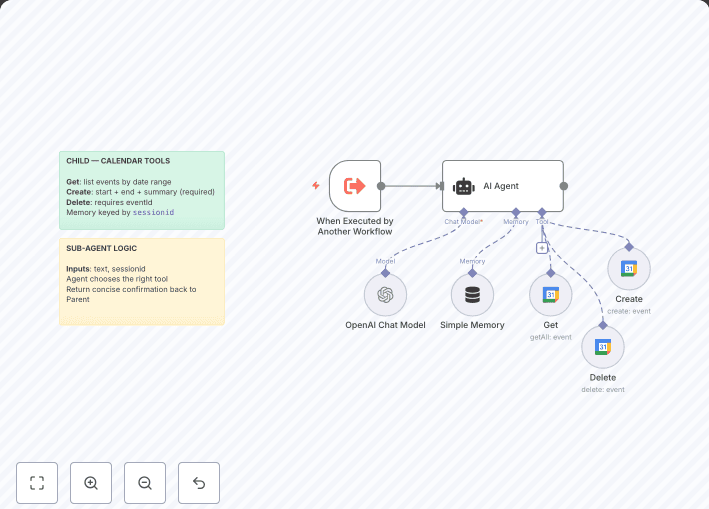Send VAPI voice requests into n8n with memory and OpenAI for conversational automation
This template shows how to capture voice interactions from VAPI (Voice AI Platform) , send them into n8n via a webhook, process them with OpenAI, and maintain context with memory. The result is a conversational AI agent that responds back to VAPI with short, business-focused answers.
✅ What this template does
- Listens for POST requests from VAPI containing the session ID and user query
- Extracts session ID and query for consistent conversation context
- Uses OpenAI (GPT-4.1-mini) to generate conversational replies
- Adds Memory Buffer Window so each VAPI session maintains history
- Returns results to VAPI in the correct JSON response format
👤 Who’s it for
- Developers and consultants building voice-driven assistants
- Businesses wanting to connect VAPI calls into automation workflows
- Anyone who needs a scalable voice → AI → automation pipeline
⚙️ How it works
- Webhook node catches incoming VAPI requests
- Set node extracts
session_id and user_query from the request body
- OpenAI Agent generates short, conversational replies with your business context
- Memory node keeps conversation history across turns
- Respond to Webhook sends results back to VAPI in the required JSON schema
🔧 Setup instructions
Step 1: Create Function Tool in VAPI
- In your VAPI dashboard, create a new Function Tool
- Name :
send_to_n8n
- Description : Send user query and session data to n8n workflow
- Parameters :
session_id (string, required) – Unique session identifieruser_query (string, required) – The user’s question
- Server URL :
https://your-n8n-instance.com/webhook/vapi-endpoint
Step 2: Configure Webhook in n8n
- Add a Webhook node
- Set HTTP method to
POST
- Path:
/webhook/vapi-endpoint
- Save, activate, and copy the webhook URL
- Use this URL in your VAPI Function Tool configuration
Step 3: Create VAPI Assistant
- In VAPI, create a new Assistant
- Add the
send_to_n8n Function Tool
- Configure the assistant to call this tool on user requests
- Test by making a voice query — you should see n8n respond
📦 Requirements
- An OpenAI API key stored in n8n credentials
- A VAPI account with access to Function Tools
- A self-hosted or cloud n8n instance with webhook access
🎛 Customization
- Update the system prompt in the OpenAI Agent node to reflect your brand’s voice
- Swap GPT-4.1-mini for another OpenAI model if you need longer or cheaper responses
- Extend the workflow by connecting to CRMs, Slack, or databases
📬 Contact
Need help customizing this (e.g., filtering by campaign, connecting to CRMs, or formatting reports)?


